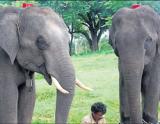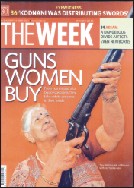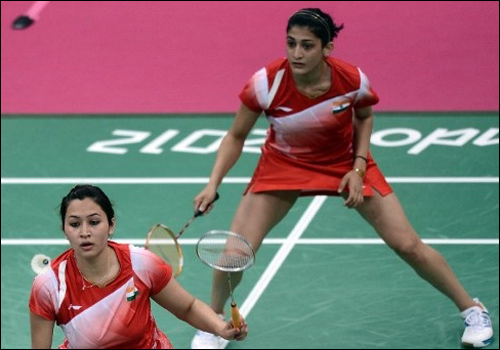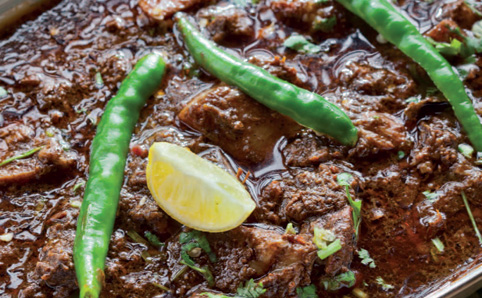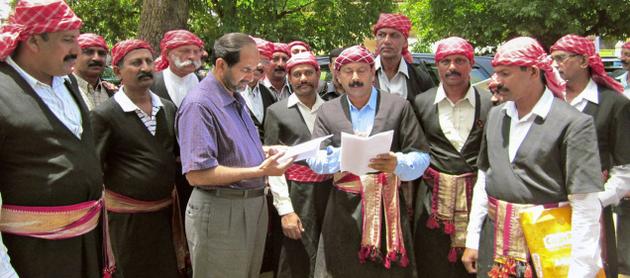
File photos of (left) CNC members led by N.U. Nachappa presenting a memorandum to the Kodagu district administration representative and (right) Kodavas staging a protest to highlight their demands.— / Photos: Nanda kumar, Sampath Kumar G.P./ The Hindu
Will the two-decade-old struggle of the Codava National Council (CNC), demanding an autonomous Kodava homeland, succeed? This is a debatable point. The CNC led by its president, Nandineravanda U. Nachappa, initially was demanding a separate Statehood, but later scaled it down to seek an autonomous homeland. Mr. Nachappa has been able to keep the organisation alive and make its presence felt, both at the State and the national level, by organising protests, demonstrations and other conspicuous events.
The main demand of the CNC is a full-fledged Kodava Autonomous Region, encompassing the 45 ancient traditional ‘naads’ (‘nad’ is a group of villages), on a par with the Darjeeling Gorkhaland Territorial Administration.
Mr. Nachappa says that the Central Government must accord ethno-linguistic tribal minority status to the Kodavas under the Constitution and extend reservation facilities in the fields of education, economic and employment. It should also ensure Constitutional special guarantee for the land tenures and customary personal laws of the Kodavas without any interference, on the lines of Jammu and Kashmir and Northeast States of India under Articles 370 and 371 of the Constitution.
The Government must facilitate the CNC to establish a Central University to propagate “Kodavalogy” on the lines of North-Eastern Hill University, Aligarh Muslim University and Banaras Hindu University, Mr. Nachappa demands. Kodava language must be included in the VIII Schedule to the Constitution and implemented as one of the three administrative languages in Kodagu.
The exemption under the Indian Arms Act to hold firearms to the ‘Kodava by race’ people should continue without any hindrance, Mr. Nachappa argues. In the same manner, the land rights being enjoyed by the Kodava people, thanks to privileges such as ‘Jamma’, must stay, he demands.
The CNC opposes the Dilip Singh Bhuria report submitted to the Centre that wanted Virajpet taluk to be declared as a Scheduled Area for the benefit of tribal people who live in that taluk. Mr. Nachappa argues that it would adversely affect the Kodava people, whose roots could be traced to Virajpet taluk and parts of Madikeri taluk.
Submitting memoranda
Memoranda are being submitted to the State and the Central Governments time and again by the CNC to further its cause. The Central and the State Government authorities too have been acknowledging them. But, there are many who look at its struggle sceptically. The movement lacked political support and the backing of the entire populace of Kodagu, they say. They also term it as an unpopular movement which does not cover populace other than a group of Kodava people in the district. But Mr. Nachappa maintains a hard stand, stating that cause of the struggle was important and it was achievable irrespective of numbers or backing by the majority.
He says that the struggle was totally peaceful and well within the bounds of the Constitutional framework. The CNC had also forged alliances with 13 other like-minded organisations across the country to achieve its goals in the past, including the Darjeeling Gorkha Hill Council and the Jharkhand Mukti Morcha.
The CNC claims credit for a series of development works that were initiated in Kodagu in the last one-and-a-half decades, including roads and bridges, plus release of special grants. It also says that the credit for the proposed move of the State Government to write to the Centre recommending establishment of a Central University in Kodagu, should go to the organisation.
Guests
Mr. Nachappa’s effort to rope in the support of political leaders and heads of other organisations is worth a mention here. During the previous Annual Day celebrations of the CNC in Madikeri, the AICC general secretary, Oscar Fernandes, Additional Advocate-General of Haryana and Supreme Court advocate, Brijesh Kalappa, and Karnataka High Court advocate, M.T. Nanaiah, were the guests. Gorkha leader Dawa Pakhrin, JMM leader Shibu Soren, and intellectuals Balveer Arora and T.K. Oommen, among others, have been guests in the past.
Mr. Nachappa has reiterated the demand of the CNC to establish the proposed Central University at the ‘Kodava Kund’ (Kodava Hill), a location identified by the CNC near Kakkabe.
The CNC delegations have submitted memoranda to the State Governors and met the Chief Ministers of Karnataka several times in the past.
Census
The CNC has been appealing to the Kodagu Deputy Commissioner to direct the caste census enumerators to enlist the Kodava people separately under the columns of the ‘Kodava’ caste, and not as ‘Kodagaru’ or ‘Kodaga’ or ‘Coorgi’ in the census sheets. This move would enable the minority Kodava people to assert their identity and uphold the dignity of the community whose people had been serving the nation admirably well in various fields, it felt. Some success was achieved in this regard in Kodagu.
To bolster its base, the CNC has been organising ‘Ain Mane’ (ancestral home) programmes in select Kodava families since a few years. It has been coming up with ‘human chain’ programmes in the entire district, mainly targeting the areas dominated by the Kodava populace.
Other causes
The CNC, apart from taking up the causes of the Kodava people, has also been observing World Indigenous Peoples Day, World Minorities Day, and ‘Black Day’ on November 1, coinciding with Kannada Rajyotsava.
Mr. Nachappa argues that ‘Kannada Nadu’ could not be complete without the creation of an autonomous homeland within the State of Karnataka.
Mr. Nachappa, who has not groomed a deputy so far in his nearly two-decade existence, has preferred to change the nomenclatures of his organisation several times. What appeared to be a broad-based organisation encompassing a few other communities as well in the beginning has come to patronise only Kodavas in the recent times. The ‘Kodagu Praja Vedike’ which took birth only to counter the CNC has now fizzled out.
Mr. Nachappa hopes that the Kodava Autonomous Region would become a reality along with Telangana.
Jeevan Chinnappa
A full-fledged Kodava Autonomous Region, a Central University to propagate ‘Kodavalogy’, special land rights… the CNC has a whole list of demands
source: http://www.TheHindu.com / Home> Features> District Plus / by Jeevan Chinnappa / September 08th, 2012
